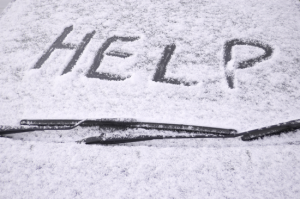The obstacles to training during Winter
Let’s explore some of the most common obstacles experienced by exercise goers during winter.
- Reduced daylight – depending on what part of the world you live in, the length of daylight can be altered significantly. Lack of daylight and the ability to enjoy daylight during your day can lead to depression and Vitamin D deficiency.
- Cold mornings – I will not lie to you, even I find it hard to get out of a warm bed on a cold early winter morning.
- Lack of motivation – it’s not uncommon for goals to fall by the wayside at winter time. There’s no bikinis or summer outfits to drive you to looking your best. When it’s cold and conditions aren’t ideal it’s easy to choose the ‘easy’ option of opting out of training or eating healthy.
- Comfort food – outside activities are often replaced with catch up dinners and socialising revolving around food and drinks. The type of food we eat as well tends to change to starchy warm, rich comforting food. Watching a DVD with popcorn and a block of chocolate anyone?
- Dehydration/lack of moisture – the cold air actually deprives you of moisture, the extra layers worn whilst working out draw more sweat from body. The cold weather also alters your thirst sensation to maintain core temperature, you are usually unaware you are dehydrated till it’s too late.
- Redirection of blood flow – Cold weather draws blood towards the abdomen to raise core temperature. This can increase your risk of injury if the arms and legs aren’t prepared for strenuous work. To prepare them try performing longer and more gradual warm up, up to 15mins of cardio and mobility exercises. This prepares your arms and legs and all their joints for a hard workout and will reduce your risk of injury.
- Increased risk of danger training outdoors – lack of light and wet, icy conditions can contribute to injuries. Be safe, know yoru environment. Do not train in the dark unless you have the proper equipment and check out your surfaces before you start to train. Reduce your risks, an injury is not worth it!
- When outdoor training is not ideal – some conditions i.e heavy rain, snow, ice etc can make training outdoors or even participating in social /active events outside unappealing. When you are not a member of a gym or do your exercise purely outdoors (for e.g running, cycling, swimming) it can affect your training program and your motivation. Try thinking outside the box, look for fitness classes that are held indoors at community centres, workout DVDs may come in handy or even moving your workouts indoors – there are a lot of options and you can get just as good a workout indoors if you know what to do!
- Illness – The germ infested months of the year. It’s not that cold weather by itself makes you sick, it can however lower your immunity and make you susceptible to picking up germs, infections etc. Illness can definitely be a set back to your training. Keep this in mind though, depending on what type of illness you have, exercise can actually help. If you catch a common cold right at the beginning, some gentle exercise can actually help your condition and lessen the severity and duration. However if you have a virus you must let your body rest and recover, pushing your body in such a state will only prolong the illness and delay recovery. Listen to your body it will tell you when you need to rest.
Don’t let these obstacles throw you off training in Winter, in our next post we will overcome these obstacles. The pros (although they appear fewer) are much more significant than the cons!
Stay connected with the Reve community via our facebook page 🙂
